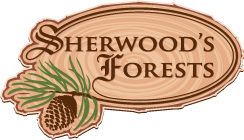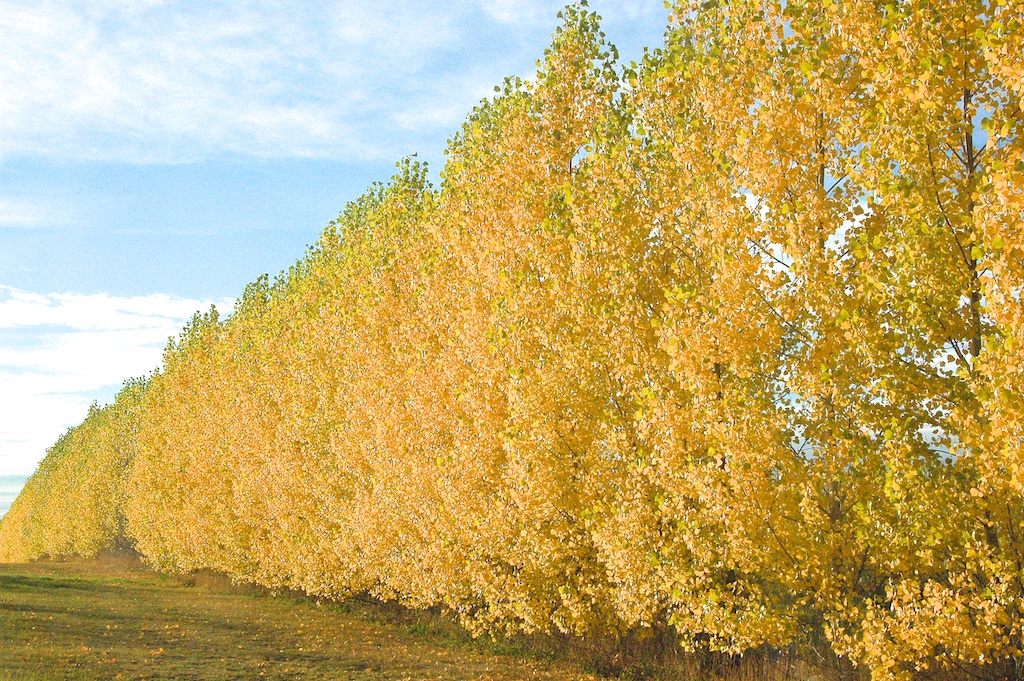
The edge were tree meets field creates a haven for all sorts of critters.
Poplars for Shelterbelts
Okanese, Brooks, Hill Poplars
The collection is somewhat arbitrary. I didn't want to have 11 different poplar files, so I've clumped them. For shelterbelts and wind breaks, you can also consider the Native Poplars and the Shade Poplars
These poplar are distinguished by being broadly columnar -- a nice compromise between height and spread. They get about 35-45 feet tall.
Brooks was used by the million by the CN as a tree to help hold the ballast in place along their lines. Well established as a shelterbelt tree. With water it will grow over 20 feet in 5 years.
Okanese is a newer kid on the block. Very similar in appearance to Brooks, but slightly less regular in outline. It is reported to have better disease resistance than Brooks. It also has good drought resistance. If you don't know what to pick, pick this one.
Hill is a beautiful tree, holding on to it's leaves for weeks after the other poplar have given up. It's also the most competitive tree against weeds. Downside: It's female.
Leaves are heavier, and larger than the other two. The cottonwood parent seems more promenant. (Both Hill and Brooks are hybrids between plains cottonwood, and Russian poplar.
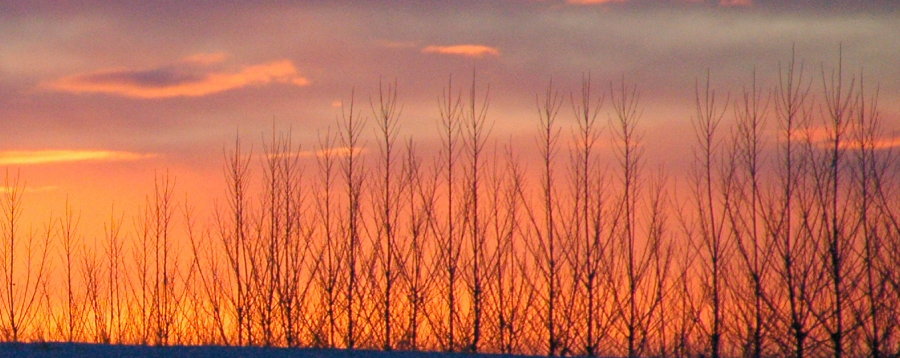
This is a 4 year old shelterbelt done with Hill Poplar. They are appoximately 16 feet tall. No extra water. No extra fertilizer. Adjacent 3 feet rototilled lightly the first two years, mowed twice a year since.
Shelterbelt progress
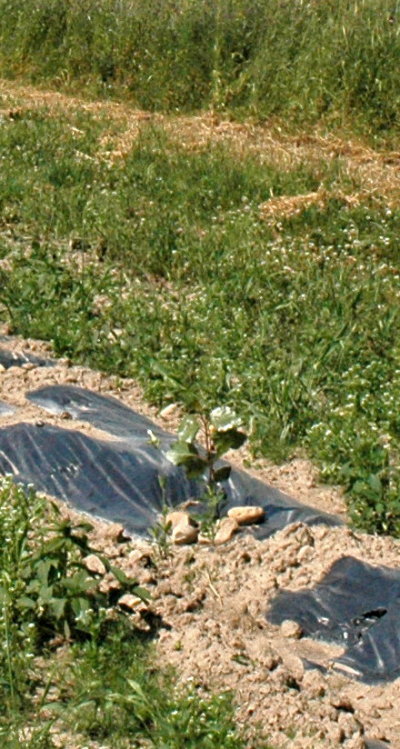
First year -- one of the runts. She caught up the next year.
Both Brooks and Hill are hybrids between P. deltoides, the plains cottonwood, found throughout southern Alberta in coulees and by sloughs, and a Russian poplar P. petrovskyana.
Hill is a female clone. No pollen. Pollen can be tough for people with allergies. This also means you get a great crop of cotton fluff in the spring. I've got native poplar anyway, so a ton or so of extra fluff goes unnoticed. The fluff is picked up by the bagger, or turned into mulch when you mow.
Brooks is a male clone. Lots of pollen, no fluff. Brooks is slightly slower growing than Hill.
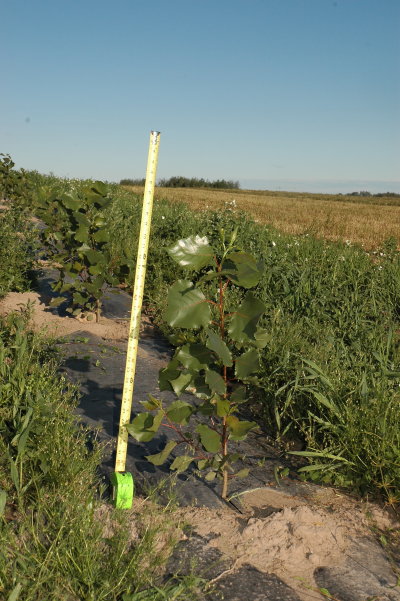
End of the first summer. Note the size of the leaf. All poplar tend to make extra large leaves when young. As they get taller they tend to have leaves that are about 4" across.
I have two shelterbelts of Hill Poplar. I planted them in 2005 as a bit more than pencil sized rooted cuttings. They put on fair growth their first year, and again their second year. Then the resident moose came by and nibbled the end two feet of every tip and branch.
Didn't slow them down much. That year, they put on 4 feet. Another year and the tips were safely out of reach.
After four years most of them were 12-16' tall, and measured 2-4" thick at the base. According to a report on the Saskatoon Forest Centre's web site I can expect them to grow about 3-4 feet per year. And that is with no extra water. I'm not sure what they would do with a quarter cup of fertilizer and a decent water supply.
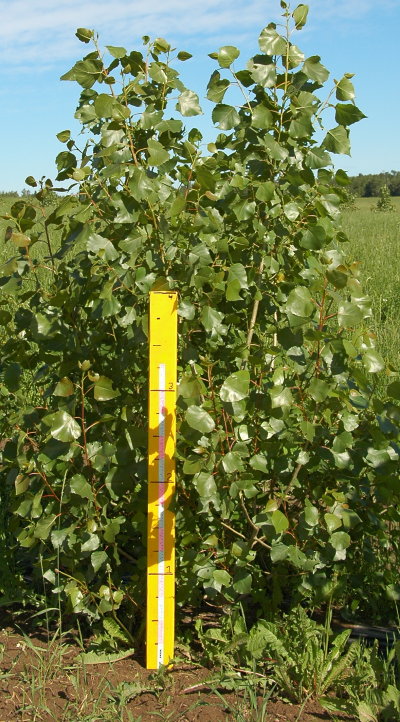
Middle of the third summer. The yellow measure is 4 feet tall. This is more typical leaf size.
Hill's branches ascend at a 45° angle. Branches, as a young tree, are heavy compared to balsam poplar. The leaves are huge, 5-6 inches across, quite heavy. Like aspen, however, the petiole is thin, compared to the leaf, so they still move easily in a light wind. The sound they make is much like distant elves applauding.
By comparison both Okanese and Brooks' branches are closer to horizontal.
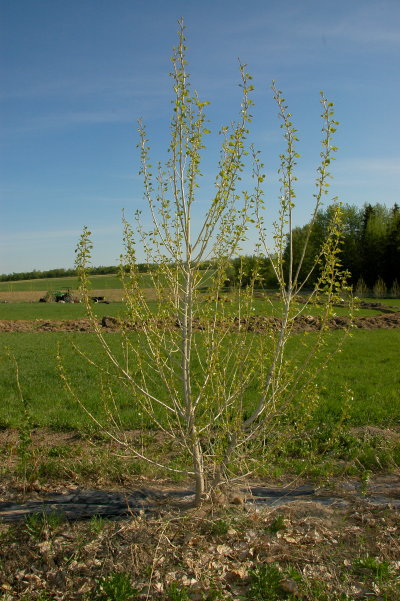
Breaking bud in mid may of their 4th summer. This shows the fullness of these trees, and why you don't need to space them as close together.
Hill is one of the last trees to break bud in spring. And it's one of the last trees to change colour in the fall. It holds onto the leaves, so that even when the wild poplar are bare sticks, Hill is still golden yellow. (I've come to the conclusion that Hill just does everything two weeks later.)
Brooks and okanese are both syncronized with our native poplars.
Saskatoon Forest Centre, in a series of tests, rated Hill as one of the best poplars for coping with weed competition while getting established. However the differences weren't huge. They are talking about survival rates of 70% compared to 60-65% for other varieties.
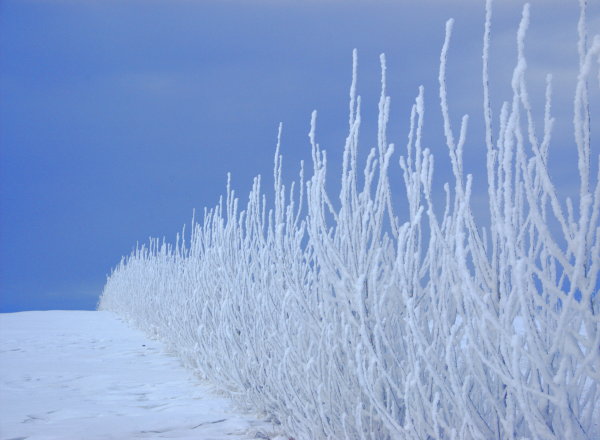
We had a bitter cold foggy December in 2007. One day when the fog was burning through, I went exploring. This is my Hill shelterbelt, at the end of its third growing season. And yes, that western sky is going to deliver on its promise of snow.
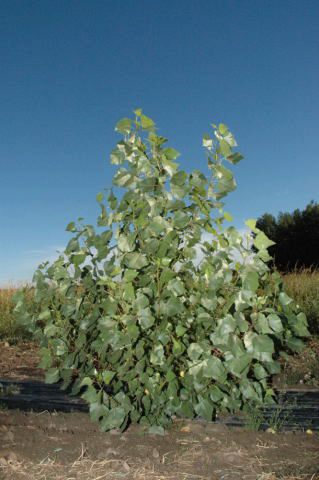 3 year old Hill hybrid poplar
3 year old Hill hybrid poplar
Hill Poplar vs Brooks
- About the same size as Brooks, but with large leathery leaves.
- Hill: Nice golden yellow fall color long after other leaves have dropped.
- Brooks: Sheds when other poplar do.
- Hill: More tolerant of drier locations.
- Brooks: Grows very fast if watered, slightly slower if not watered.
- Hill: Best shelterbelt poplar.
- Brooks: Good shelterbelt poplar.
- Hill: Female clone. Will produce lots of cotton and seeds.
- Brooks: Male clone. Will produce lots of pollen
Okanese vs Brooks
This is provisional, as none of my okanese are very big yet.
- Very similar in size and growth habit. Okanese may have smaller leaves.
- Okanese is somewhat more resistant to stem canker.
Got something to say? Email me: sfinfo@sherwoods-forests.com
Interesting? Share this page.
Want to talk right now? Call me: (8 am to 8 pm only, please) 1-780-848-2548
Do not arrive unannounced. Phone for an appointment. Why? See Contact & Hours That same page gives our hours of operation.
Back to Top
Copyright © 2008 - 2021 S. G. Botsford
Sherwood's Forests is located about 75 km southwest of Edmonton, Alberta. Please refer to the map on our Contact page for directions.
